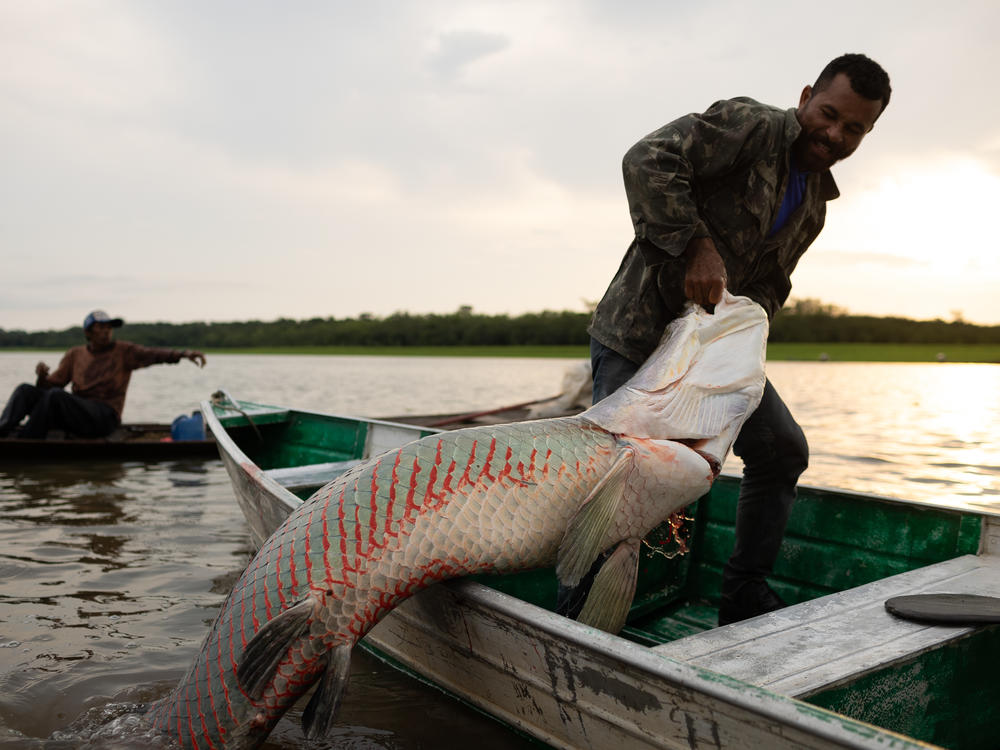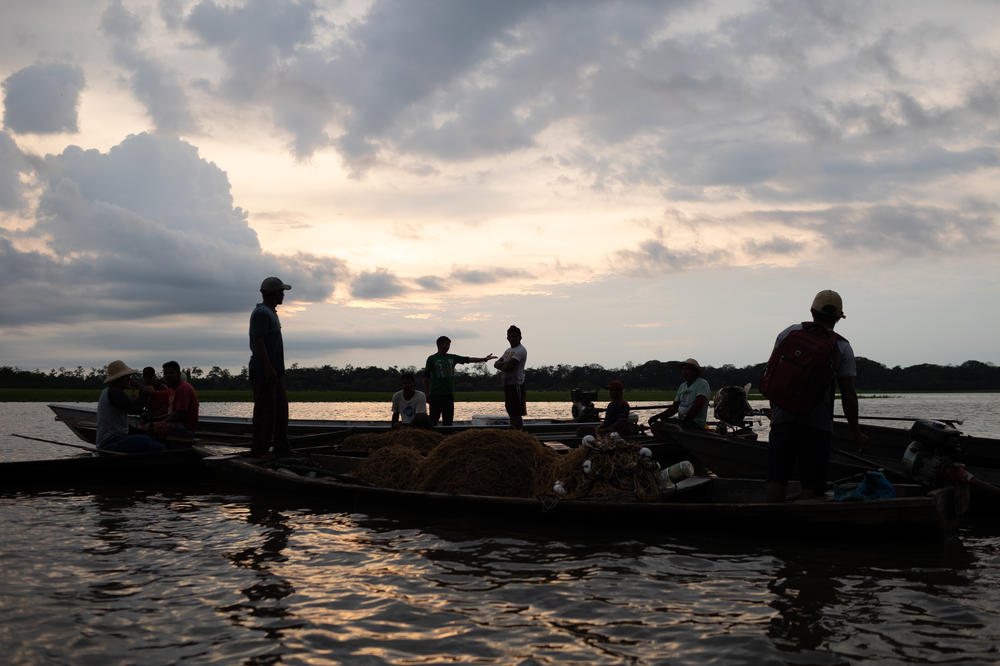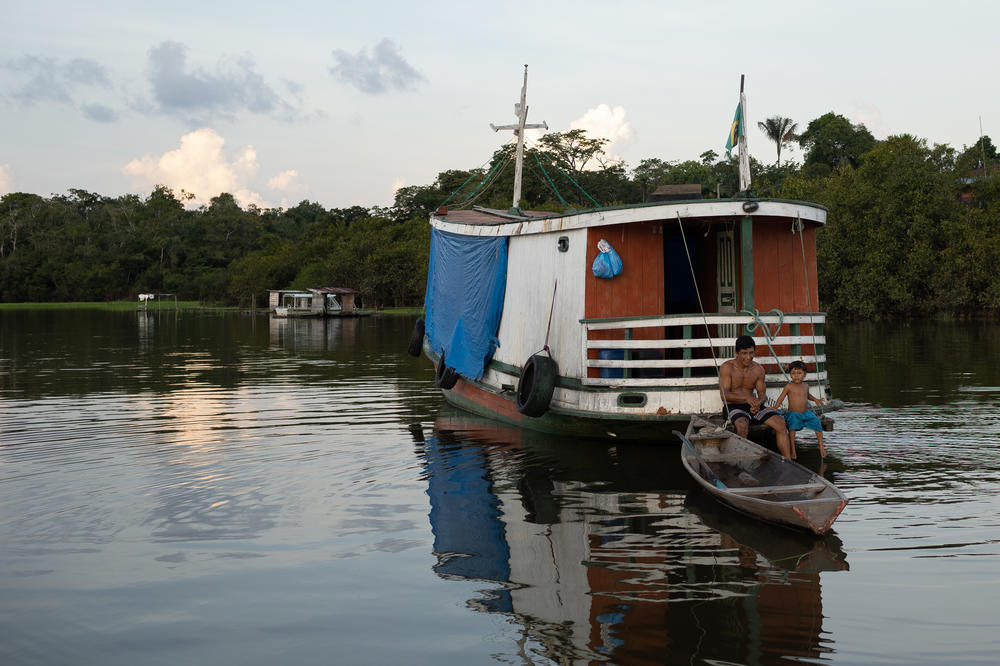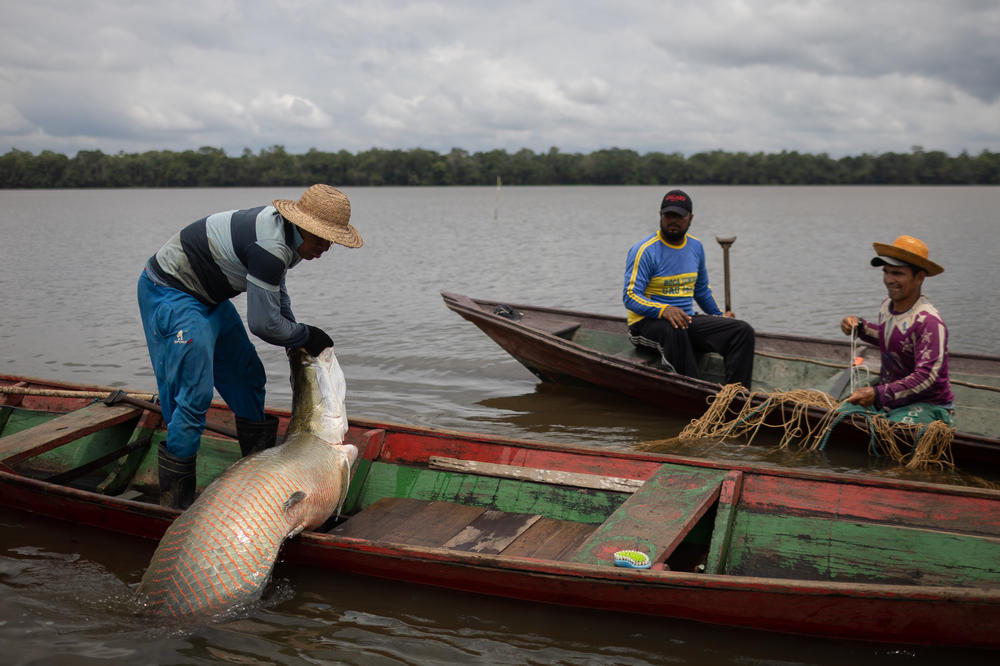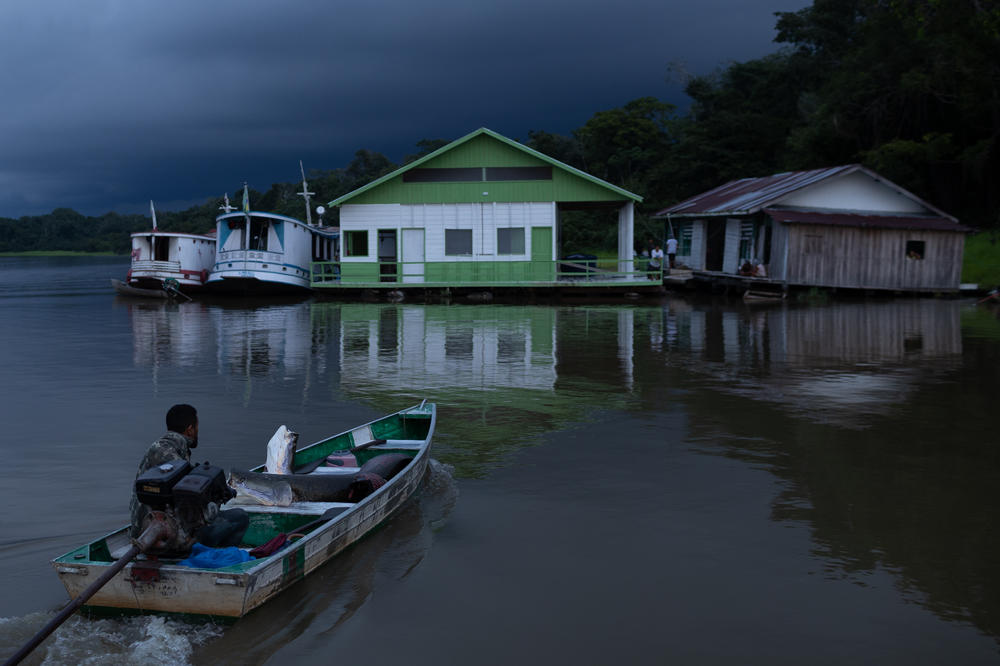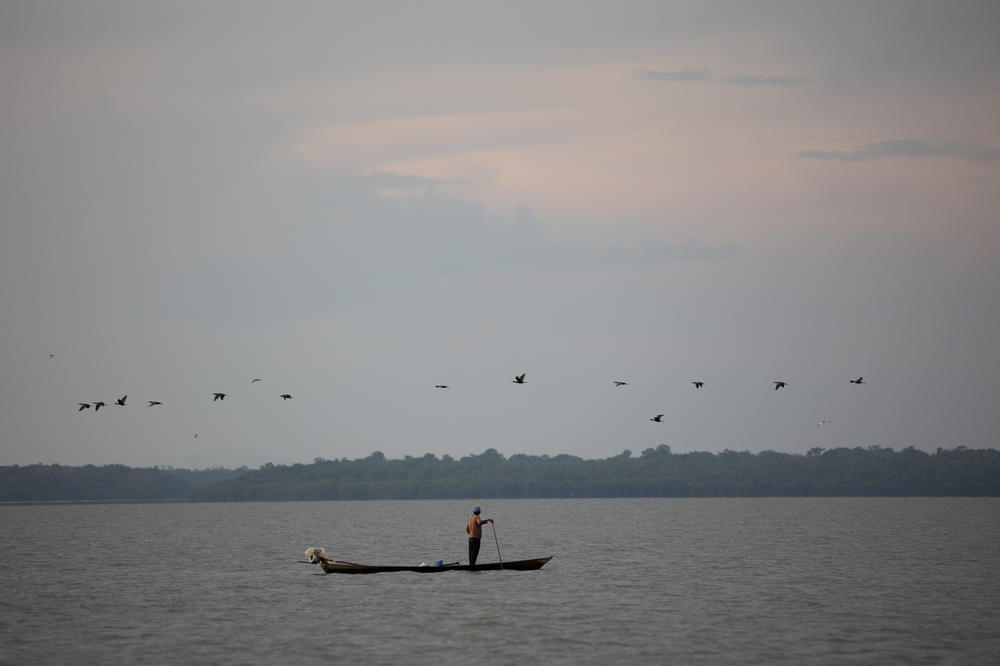Section Branding
Header Content
Rare good news from the Amazon: Gigantic fish are thriving again
Primary Content
MAMIRAUÁ RESERVE, Brazil — On this stretch of the Amazon River, you don't need a fish finder to locate the pirarucu, one of the world's largest freshwater fish. The splashing gives them away.
Like the saltwater tarpon, the pirarucu is an air-breathing fish that must rise to the surface every 15 minutes or so to gulp oxygen. That makes it easier to locate and catch pirarucu — also known as arapaima or paiche — that can grow to be 10-feet long, weigh up to 450 pounds and are prized for their meat.
Their constant surfacing also makes it easier for poachers. In fact, widespread illegal fishing caused the pirarucu to nearly disappear from some parts of the Amazon. But thanks to sustainable fishing programs that combine education with strict rules and quotas, it's now making a comeback.
"The pirarucu population has recovered," says Ana Claudia Torres, who runs the sustainable fishing program for the Mamirauá Institute, which manages a vast nature reserve covering 4,300 square miles of jungle in northern Brazil.
During a recent visit to the reserve, artisanal fishermen from riverside villages were out in force to take advantage of the short, three-week fishing season. About two dozen of them sat in small boats, keeping quiet as they waited for the pirarucu to show themselves.
When one jumped, the fishermen quickly paddled their boats in a circular formation and cast out their nets. Then, they slowly pulled the nets into an ever-tighter circle until the fish became entangled and trapped.
Even then, the battle was not over as the powerful fish violently thrashed its huge body back and forth. To avoid injury while landing it, the fishermen resorted to what seemed like Flintstones technology: They used wooden clubs to knock the fish senseless, then pulled it into the boat.
It looked prehistoric, with a gaping mouth, reddish scales and a rudimentary, rounded tail like an eel. It took up much of the space in the boat but at least today the water was high. During droughts when tributaries dry up, the fishermen sometimes build makeshift stretchers for the fish or carry them home on their backs.
"Today is a good day. We've already caught eight fish," says Ailton Bruno, a 22-year-old fisherman who keeps tabs on the number of fish taken each day.
Catching them used to be a lot harder.
Starting in the 1960s, bigger boats and motors, improved nets, plus ice-making machines allowed fishermen to catch more pirarucu and preserve them for days until they could get down river to Amazonian towns and cities, where most of the fish are sold. But overfishing took its toll.
"My father would go out fishing for four or five days and come back with a single pirarucu," says Edivan Ferreira, who lives in the riverside village of Boa Vista do Calafati.
Now, he says, the fish are flourishing and points out that Boa Vista do Calafati sits inside the Mamirauá reserve, where fishing is tightly controlled.
Here's how it works. First, fishermen count the number of pirarucu in nearby lakes and rivers by watching them surface. After reporting these numbers to environmental officials, they are allowed to catch 30% of the adults during a fishing season that lasts just a few weeks during a period when the fish are not mating, usually sometime from September through November.
The pirarucu are tagged so buyers will know they were caught legally. Meanwhile, amid the absence of law enforcement along much of the Amazon River, communities have organized their own boat patrols to discourage illegal fishing. Now, some Amazon communities that practice managed fishing have reported a nearly tenfold increase in the pirarucu population.
However, outside nature reserves, illegal fishing remains a big problem, one that is often financed by drug traffickers. They hide cocaine aboard fishing boats and use the fishing business to launder their profits, says Eduardo Taveira, the top environmental official in Amazonas province that includes the Mamirauá reserve.
"Drug dealers pay fishermen almost 20 times more" than their normal income, Taveira told NPR.
As a result, he says, some fishing villages are eager to collaborate with the smugglers. Another problem, according to Torres, is that President Jair Bolsonaro, who lost his bid for reelection in October, has spent the past four years rolling back environmental laws and promoting a free-for-all of fishing, logging and mining in the Amazon.
This issue made headlines in June when British journalist Dom Phillips and Brazilian environmentalist Bruno Pereira — who were investigating illegal fishing and other environmental crimes in the Amazon — were shot dead by a poacher. Torres, who had met with Pereira last year to discuss illegal fishing, says the killings shocked Brazilian environmentalists.
"What happened to them could happen to any of us," she says.
Still, she's determined to press ahead because the sustainable fishing program is working.
Each pirarucu caught in the Mamirauá reserve sells for about $100. That's a huge boost for riverside communities that get by during the rest of the year on subsistence farming.
But they have to move fast. They must get the fish out of the tropical heat and ready for shipment within a few hours or the meat will start to spoil.
So, Ailton Bruno and fellow fishermen rush their catch back to a one-room processing plant built on the river, where workers gut the pirarucus, wash them and place them in the cargo hold of boats where they are covered in ice.
Their final destination is Manaus, about three days down river from here. Although some pirarucu meat is exported, nearly all of it ends up on the plates of diners in Brazilian households and restaurants.
Copyright 2022 NPR. To see more, visit https://www.npr.org.
